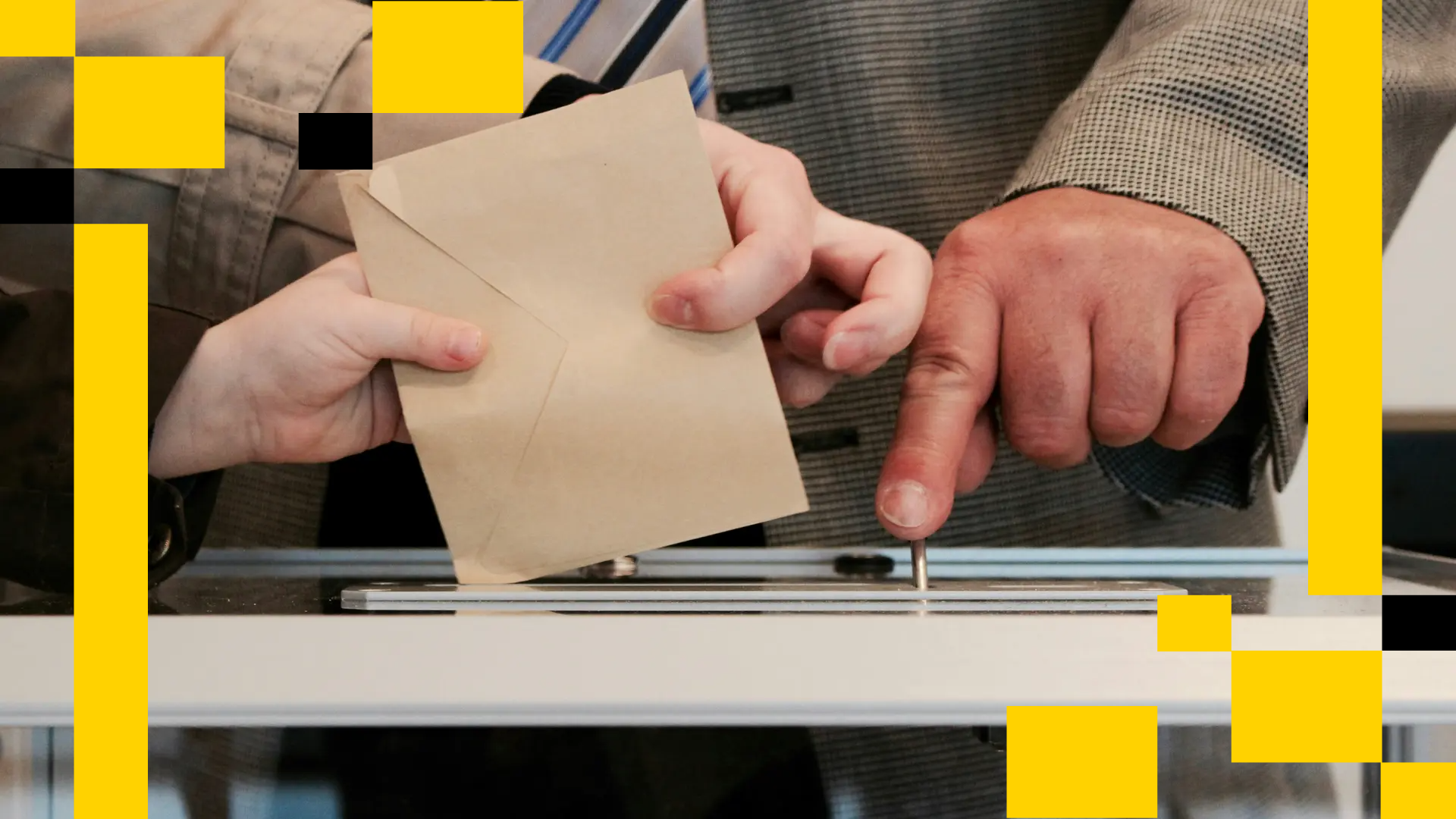Uncategorized
AI Shows Why Data Portability Matters

Data portability is a commonly-repeated promise of crypto. “Take your followers and social graph across the internet.” “Bring your video game items across games and platforms.” “Log into any site with a single, unified identity.” These claims have excited builders and developers, but haven’t yet gone mainstream.
Recent platform shifts have highlighted the fragility of our digital lives. With talks of a potential TikTok ban, creators face losing years of content and audience relationships overnight. Meanwhile, as US consumers embrace new AI models like DeepSeek, built in China, they face similar questions about where their data lives and who might get access to it.
These are symptoms of a fundamental problem: users don’t truly own or control their data. We live on rented land.
Many of today’s leading crypto investors wrote about data portability and user sovereignty in the early days of Web2. This vision of an internet — where users, not platforms, control their digital lives — was one of the driving forces behind crypto. While crypto has succeeded in financial applications, this promise of portable data and a self-sovereign internet remains unfulfilled.
We’ve seen many attempts: NFTs letting you bring items across games, decentralized social networks like Farcaster and Bluesky promising portable social graphs, and verifiable identity standards. None have (yet) seen widespread adoption.
The reality? While early internet thinkers care deeply about the principles of data sovereignty, most users have a simpler question: What can I actually do with it?
Without AI, most data is only relevant within the walled gardens of the platform it’s on. With AI, it becomes a valued digital commodity and a tool to power nearly every application. Your message history helps AI understand your writing style, your preferences, and your relationships. With many users storing their data in self-sovereign wallets, developers can build AI experiences that are truly personalized. AI finally provides the “why” on data portability, in the form of a better product experience rather than ideology alone.
There is still a cold start problem. It’s inconvenient for users to connect their data. And for developers, the mindset today is: if you convince users to upload their data to your platform, why would you make it easy for them to take it elsewhere? This creates a cycle where each new platform becomes another walled garden, recreating the very problem they set out to solve.
This is where new incentive structures could finally break the extractive cycle. DataDAOs create an immediate opportunity for users to port their data through financial incentives, solving the cold start problem, so long as the data is onboarded in a self-sovereign, interoperable way, like on Vana. As more users bring their data into these interoperable systems, developers can build applications that weren’t possible before.
Imagine a personalized health coach that can analyze your sleep data from Oura, your workouts from Strava, your nutrition from food delivery apps, and your stress levels from communication patterns.
Or, an AI assistant that truly understands you because it can access your complete digital history while maintaining your privacy through granular permissions.
This solves a critical problem that has plagued past attempts at data portability. Users won’t export their data without clear benefits, and developers won’t build for portable data without users. Data DAOs break this deadlock by making it immediately worthwhile for users to connect data.
More importantly, once users make their data self-sovereign, entirely new kinds of applications become possible. AI agents can access your complete digital history to provide truly personalized experiences. Developers can build applications that combine data in ways that weren’t possible when it was siloed across platforms.
We know there’s a lot of demand for AI training data – many major model providers are poised to hit a data wall soon, making them search for publicly unavailable datasets to train newer, higher-performing models. New models like DeepSeek have shown the value of high quality data, with carefully curated human-generated examples to bootstrap their novel training method. At the same time, user data policies like GDPR and CCPA legally require platforms to allow users to export their data in a usable, standardized format. Networks like Vana allow users to monetize their data by collectively bargaining with model trainers in need of valuable training data no longer available on the public internet, and make it interoperable for true data sovereignty.
Two forces converging – the proliferation of AI, and new financial incentives – create the potential for both users and developers to benefit from data portability. The interests of users, developers, and data networks finally align. Users gain immediate value plus better AI experiences, developers get access to rich user data to build new applications, and networks grow stronger with each new participant.
For the first time, we have both the technology to make data portability valuable and the incentives to drive adoption.
Crypto has yet to deliver on its original promise of a self-sovereign, interoperable internet where users own their data, unfettered by Web2’s walled gardens. By creating financial incentives to bring data onboard and leveraging AI’s capabilities, we finally have a window of opportunity to make the internet truly user-owned.
Uncategorized
What’s Next for Bitcoin and Ether as Downside Fears Ease Ahead of Fed Rate Cut?

Fears of a downside for bitcoin (BTC) and ether (ETH) have eased substantially, according to the latest options market data. However, the pace of the next upward move in these cryptocurrencies will largely hinge on the magnitude of the anticipated Fed rate cut scheduled for Sept. 17.
BTC’s seven-day call/put skew, which measures how implied volatility is distributed across calls versus puts expiring in a week, has recovered to nearly zero from the bearish 4% a week ago, according to data source Amberdata.
The 30- and 60-day option skews, though still slightly negative, have rebounded from last week’s lows, signaling a notable easing of downside fears. Ether’s options skew is exhibiting a similar pattern at the time of writing.
The skew shows the market’s directional bias, or the extent to which traders are more concerned about prices rising or falling. A positive skew suggests a bias towards calls or bullish option plays, while a negative reading indicates relatively higher demand for put options or downside protection.
The reset in options comes as bitcoin and ether prices see a renewed upswing in the lead-up to Wednesday’s Fed rate decision, where the central bank is widely expected to cut rates and lay the groundwork for additional easing over the coming months. BTC has gained over 4% to over $116,000 in seven days, with ether rising nearly 8% to $4,650, according to CoinDesk data.
What happens next largely depends on the size of the impending Fed rate cut. According to CME’s Fed funds futures, traders have priced in over 90% probability that the central bank will cut rates by 25 basis points (bps) to 4%-4.25%. But there is also a slight possibility of a jumbo 50 bps move.
BTC could go berserk in case the Fed delivers the surprise 50 bps move.
«A surprise 50 bps rate cut would be a massive +gamma BUY signal for ETH, SOL and BTC,» Greg Magadini, director of derivatives at Amberdata, said in an email. «Gold will go absolutely nuts as well.»
Note that the Deribit-listed SOL options already exhibit a strong bullish sentiment, with calls trading at 4-5 volatility premium to puts.
Magadini explained that if the decision comes in line with expectations for a 25 bps cut, then a continued calm «grind higher» for BTC looks likely. ETH, meanwhile, may take another week or so to retest all-time highs and convincingly trade above $5,000, he added.
Uncategorized
Asia Morning Briefing: Native Markets Wins Right to Issue USDH After Validator Vote

Good Morning, Asia. Here’s what’s making news in the markets:
Welcome to Asia Morning Briefing, a daily summary of top stories during U.S. hours and an overview of market moves and analysis. For a detailed overview of U.S. markets, see CoinDesk’s Crypto Daybook Americas.
Hyperliquid’s validator community has chosen Native Markets to issue USDH, ending a weeklong contest that drew proposals from Paxos, Frax, Sky (ex-MakerDAO), Agora, and others.
Native Markets, co-founded by former Uniswap Labs president MC Lader, researcher Anish Agnihotri, and early Hyperliquid backer Max Fiege, said it will begin rolling out USDH “within days,” according to a post by Fiege on X.
According to onchain trackers, Native Markets’ proposal took approximately 70% of validators’ votes, while Paxos took 20%, and Ethena came in at 3.2%.
The staged launch starts with capped mints and redemptions, followed by a USDH/USDC spot pair before caps are lifted.
USDH is designed to challenge Circle’s USDC, which currently dominates Hyperliquid with nearly $6 billion in deposits, or about 7.5% of its supply. USDC and other stablecoins will remain supported if they meet liquidity and HYPE staking requirements.
Most rival bidders had promised to channel stablecoin yields back to the ecosystem with Paxos via HYPE buybacks, Frax through direct user yield, and Sky with a 4.85% savings rate plus a $25 million “Genesis Star” project.
Native Markets’ pitch instead stressed credibility, trading experience, and validator alignment.
Market Movement
BTC: BTC has recently reclaimed the $115,000 level, helped by inflows into ETFs, easing U.S. inflation data, and growing expectations for interest rate cuts. Also, technical momentum is picking up, though resistance sits around $116,000, according to CoinDesk’s market insights bot.
ETH: ETH is trading above $4600. The price is being buoyed by strong ETF inflows.
Gold: Gold continues to trade near record highs as traders eye dollar weakness on expected Fed rate cuts.
Elsewhere in Crypto:
Uncategorized
BitMEX Co-Founder Arthur Hayes Sees Money Printing Extending Crypto Cycle Well Into 2026

Arthur Hayes believes the current crypto bull market has further to run, supported by global monetary trends he sees as only in their early stages.
Speaking in a recent interview with Kyle Chassé, a longtime bitcoin and Web3 entrepreneur, the BitMEX co-founder and current Maelstrom CIO argued that governments around the world are far from finished with aggressive monetary expansion.
He pointed to U.S. politics in particular, saying that President Donald Trump’s second term has not yet fully unleashed the spending programs that could arrive from mid-2026 onward. Hayes suggested that if expectations for money printing become extreme, he may consider taking partial profits, but for now he sees investors underestimating the scale of liquidity that could flow into equities and crypto.
Hayes tied his outlook to broader geopolitical shifts, including what he described as the erosion of a unipolar world order. In his view, such periods of instability tend to push policymakers toward fiscal stimulus and central bank easing as tools to keep citizens and markets calm.
He also raised the possibility of strains within Europe — even hinting that a French default could destabilize the euro — as another factor likely to accelerate global printing presses. While he acknowledged these policies eventually risk ending badly, he argued that the blow-off top of the cycle is still ahead.
Turning to bitcoin, Hayes pushed back on concerns that the asset has stalled after reaching a record $124,000 in mid-August.
He contrasted its performance with other asset classes, noting that while U.S. stocks are higher in dollar terms, they have not fully recovered relative to gold since the 2008 financial crisis. Hayes pointed out that real estate also lags when measured against gold, and only a handful of U.S. technology giants have consistently outperformed.
When measured against bitcoin, however, he believes all traditional benchmarks appear weak.
Hayes’ message was that bitcoin’s dominance becomes even clearer once assets are viewed through the lens of currency debasement.
For those frustrated that bitcoin is not posting fresh highs every week, Hayes suggested that expectations are misplaced.
In his telling, investors from the traditional world and those in crypto actually share the same premise: governments and central banks will print money whenever growth falters. Hayes says traditional finance tends to express this view by buying bonds on leverage, while crypto investors hold bitcoin as the “faster horse.”
His conclusion is that patience is essential. Hayes argued that the real edge of holding bitcoin comes from years of compounding outperformance rather than short-term speculation.
Coupled with what he sees as an inevitable wave of money creation through the rest of the decade, he believes the present crypto cycle could stretch well into 2026, far from exhausted.
-

 Business11 месяцев ago
Business11 месяцев ago3 Ways to make your business presentation more relatable
-

 Fashion11 месяцев ago
Fashion11 месяцев agoAccording to Dior Couture, this taboo fashion accessory is back
-

 Entertainment11 месяцев ago
Entertainment11 месяцев ago10 Artists who retired from music and made a comeback
-

 Entertainment11 месяцев ago
Entertainment11 месяцев ago\’Better Call Saul\’ has been renewed for a fourth season
-

 Entertainment11 месяцев ago
Entertainment11 месяцев agoNew Season 8 Walking Dead trailer flashes forward in time
-

 Business11 месяцев ago
Business11 месяцев ago15 Habits that could be hurting your business relationships
-

 Entertainment11 месяцев ago
Entertainment11 месяцев agoMeet Superman\’s grandfather in new trailer for Krypton
-

 Entertainment11 месяцев ago
Entertainment11 месяцев agoDisney\’s live-action Aladdin finally finds its stars





